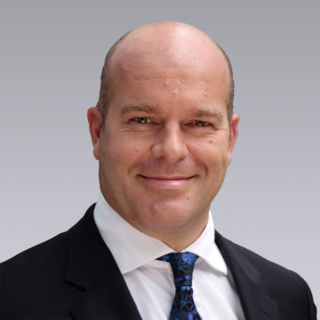With the Munich Expo underway, the commercial real estate (CRE) investment industry is in full swing as we get into closing season. At what is probably the biggest event on the European CRE investment market calendar, back-to-back meetings are the order of the day and, hopefully, are deals being closed.
Warming up for this event, I attended the PropertyEU Central and Eastern European (CEE) Investment Briefing in London, where I presented and discussed the main talking points currently impacting the CEE and European investment markets. Here’s a summary of the key talking points and outlook for the region:
Investment sentiment toward CEE largely positive
The main question on most people’s minds seems to be “What impact has the Russia-Ukraine situation had on the CEE market?” Well, despite the prolongation of the Russia-Ukraine situation since March 2014, the impact has remained local. While Russian investment volumes are down relative to 2013, deals are still being closed in the market, although predominantly by local market players.
Elsewhere, the region’s core Polish and Czech Republic markets remain very buoyant with both markets likely to match, at the minimum, last year’s investment volumes. As the global wall of money seeking CRE investment opportunities continues to expand, capital is spreading further afield into Hungary and the Baltics, with increasing investment interest growing in Romania, Serbia and Bulgaria.
We expect this trend to continue over the next 18 months, driving investment volumes as capital continues to seek out yield and opportunities. The CEE region as a whole offers quite significant pricing and yield discounts to the more mature European markets, providing a range of investors — from core to opportunistic — with strong returns potential. In fact, recently published research illustrates that, if an investor had acquired a diversified regional CEE portfolio in 2009 and had sold in 2014, this would have generated total returns of between 6 to 9 percent (depending on the balance of office, retail and industrial-logistics assets chosen).
CEE return potential compared to other European markets
When we compare these results to five-year total returns data for Germany, Spain and Holland (as produced by Investment Property Databank), we see that a CEE-diversified portfolio would have generated higher returns for both offices and traditional retail. Industrial returns would have been very similar, with industrial income returns at par with Germany and Holland — two of continental Europe’s largest and most established industrial occupier and distribution markets. Not bad work if you can get it. Finding the right deals and product can take time, of course. So, it helps to have a strong track record across the CEE region and to be active in each local market.
Balancing risk and return
Many international investors often perceive the CEE region as risky, at least relative to Western Europe. But this perception is changing. The CEE region is a relatively young institutional investment market that has only really been going for 10 years. It may not have the same depth of local capital as Germany, Spain and Holland, but we are starting to see much more domestic capital involvement, which will help drive liquidity. Returns analysis shows that taking the risk is merited.
Then there’s the fact that capital values haven’t significantly picked up since 2009. There has been limited yield compression and rental growth across the CEE region over the past five years. Combine all this with improving economic results and more stable occupational markets, and you can conclude there’s a strong platform to drive even higher returns in the years ahead.
Futures and options
The European market runs at several speeds. Each country and market has its pluses and minuses. At the same time, we can’t forecast future events that will undoubtedly impact the markets down the line. For now, I remain objectively positive and realistic about the prospects of the CEE region and hope that more investors engage in the regional growth story.
Stay tuned. As ever, I’ll be keeping my digits on the pulse.
Damian Harrington is Director and Head of Research for Colliers International in EMEA. He has lived and worked across the region, has a focus on investment and a love of “all things shed,” even the garden variety.

 Damian Harrington
Damian Harrington

 Colliers Insights Team
Colliers Insights Team